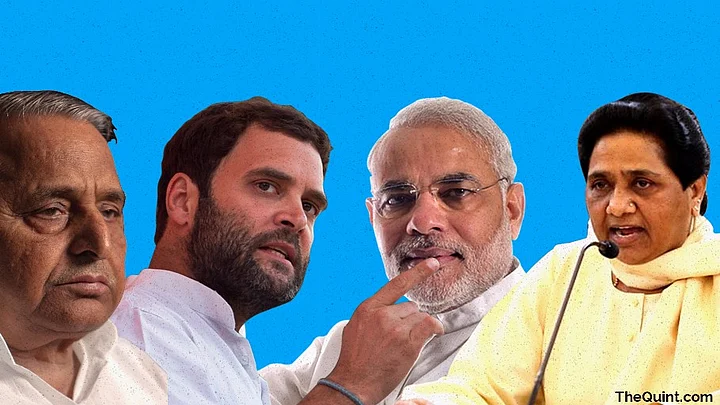Amidst the demonetisation chaos and the internal feud within the Samajwadi Party, the Election Commission has announced the election dates for five states. The voting for a total of 690 Vidhan Sabha (Assembly) seats of these states would begin on 4 February and will go on till 8 March. The results will be announced on 11 March.
The elections for Punjab, Uttarakhand and Goa will be completed in one phase. On the other hand, Manipur, which is struggling with financial entanglements post demonetisation, will have its elections in two phases. However, all eyes will be focused on Uttar Pradesh, which will have to undergo a month-long election process. The state will complete its election in seven phases.
The UP elections had taken place in seven phases in 2012 as well, but the voting regions in those elections were chosen based on very different criteria. In the previous Vidhan Sabha elections, the voting had started from Purvanchal, followed by Bundelkhand and Avadh, and had concluded in southern parts of the state.
The results are expected to be as follows:
However, following this, the Election Commission completely changed the voting pattern in the General Elections of 2014. This time, the voting started from predominantly Muslim cities of southern UP cities, including Saharanpur, Muzaffarnafar and Aligarh. It concluded in the northern Savaran cities of Gorakhpur, Aazamgarh and Varanasi.
The results left the entire country shocked. UP voters, spread across Muslims, Dalits, OBC, Rajput, Brahmans, Yadavs, Kurmi, Koyri and several other communities, came out in hordes to support the BJP.
The results were as follows:
It can be assumed that the voting ‘south to north’ pattern worked in BJP’s favour. The Election Commission has once again decided to conduct elections in UP on the lines of the General Elections.
The voting for Vidhan Sabha elections in February will begin in south UP and move upwards towards the north. During the Lok Sabha elections, south UP had shown great support for the BJP, according to experts, and if this is repeated, the BJP clearly stands to gain.
However, during the elections, there would be a ban on exit polls and election surveys, but that cannot still stop word from spreading. Is it a mere coincidence that the Election Commission has once again decided to follow the ‘south to north’ pattern for elections in UP?
However, things have significantly changed since 2014. During the General Elections, there was a wave of support for Narendra Modi washing over the state. Additionally, during the Lok Sabha elections, national politics always overwhelms voters’ preferences, while during Vidhan Sabha elections, regional issues take precedence.
People’s stand on the Central government’s decision to implement note ban is still unclear. The fact that Prime Minister Narendra Modi did not mention demonetisation at all during the mega rally in Lucknow on 2 January implies that it indeed is an obstacle for the BJP to overcome.
On the other hand, despite the chaos within the Samajwadi Party, Chief Minister Akhilesh Yadav is emerging as a shining star in UP’s political terrain. Even recent election surveys have shown the Akhilesh-led SP to be the Number 1 party in UP.
According to the ABP-CSDS survey, Akhilesh Yadav is the top candidate to be chosen as the next chief minister by the voters. Also SP – a party of musclemen – is asking for voters using a development model for the first time.
The SP slogan ‘Jiska jalwa qayam hai, uska naam Mulayam hai’ (Whose fame knows no bound, his name is Mulayam) has now changed to ‘Jiska pita Mulayam hai, Uska jalwa qayam hain’ (One whose father is Mulayam, his fame knows no bounds).
Mayawati, who once raised the slogan of ‘Tilak, taraju aur talwar, inko maaro joote chaar’ (Tilak, weighing balance and sword – all of them should be expelled), is attempting a repeat of her successful social engineering experiment with Savaran from 2007. In the current elections, out of the total 403 seats, Mayawati has given 113 tickets to Brahmans and Rajputs, while Dalits – the core BSP voters – have only received 87 tickets.
Despite all its efforts, the Congress is out of the main race. The enthusiasm, which party vice-president Rahul Gandhi’s September kisan yatra filled the party members with, has faded. However, the potential coalition with Akhilesh can improve the party’s prospects.
The EC has sounded the election trumpet post its date of announcement. The ball is now in the voters’ court. The eagerly-awaited results of 11 March would determine who would finally wear the crown in this state embroiled in caste politics.
(This story originally appeared on QuintHindi. It’s been translated by Rosheena Zehra.)
(At The Quint, we question everything. Play an active role in shaping our journalism by becoming a member today.)
